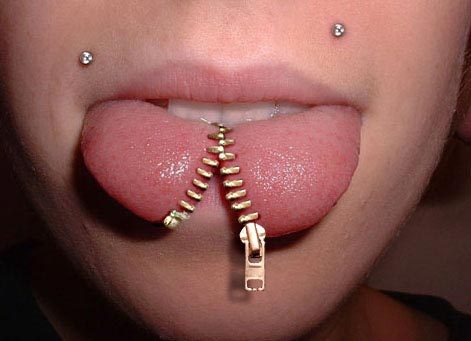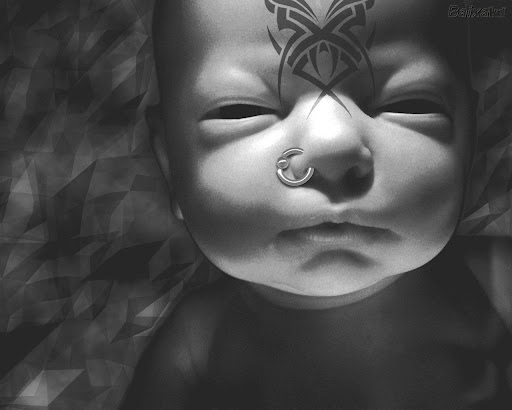Sunday, October 31, 2010
Friday, October 29, 2010
Saturday, October 23, 2010
Body Painting with Tim Gratton
 At the end of the second day we had an in house photo shoot with Leanne King from Crackerjack Photography. Leanne worked her way through our models over the course of the afternoon. I have added a video so you can see the work produced by the other artists at the workshop. I’m so happy with the results!
At the end of the second day we had an in house photo shoot with Leanne King from Crackerjack Photography. Leanne worked her way through our models over the course of the afternoon. I have added a video so you can see the work produced by the other artists at the workshop. I’m so happy with the results!I was inspired by Tim’s passion for body painting and his ability to share as much as possible with his students. A quote from Sir Winston Churchill springs to mind – “We make a living out of what we get. But we make a life out of what we give”
 I want to send a big thanks to my model Tahlia, Wendy Fantasia for organising the workshop and Tim – none of it would have been possible without you! I met some amazing people and left with a well full of inspiration. All in all a huge success!
I want to send a big thanks to my model Tahlia, Wendy Fantasia for organising the workshop and Tim – none of it would have been possible without you! I met some amazing people and left with a well full of inspiration. All in all a huge success!
0
comments
Posted by
Ella Aprilia on 6:44 AM
Labels: Adelaide, Body Painting, Burlesque, Fashion Hair and Makeup, Freelance Makeup Artist, Photoshoot
Labels: Adelaide, Body Painting, Burlesque, Fashion Hair and Makeup, Freelance Makeup Artist, Photoshoot
Friday, October 22, 2010
Body Piercings in modern Corset designs ideas for Girls
0
comments
Posted by
Ella Aprilia on 1:25 PM
Labels: Body Piercing, corset piercing, piercing designs, piercing gallery
Labels: Body Piercing, corset piercing, piercing designs, piercing gallery
Body Piercings Attractive Wierd Ideas designs
0
comments
Posted by
Ella Aprilia on 1:14 PM
Labels: Body Piercing, corset piercing, piercing designs, Piercing Jewelry
Labels: Body Piercing, corset piercing, piercing designs, Piercing Jewelry
Sunday, October 17, 2010
Friday, October 15, 2010
New Body Piercing Designs Special for Celebrity
0
comments
Posted by
Ella Aprilia on 12:09 PM
Labels: pierced, piercing, Piercing Jewelry, piercings, sexy piercing, women piercing
Labels: pierced, piercing, Piercing Jewelry, piercings, sexy piercing, women piercing
Body Piercing Designs: Free Nose Piercing and tattoo on baby
0
comments
Posted by
Ella Aprilia on 12:07 PM
Labels: Body Piercing, nose piercing, pierced, piercing, Piercing Jewelry, piercings
Labels: Body Piercing, nose piercing, pierced, piercing, Piercing Jewelry, piercings
Wednesday, October 13, 2010
The Most Common Type of Ear Piercings

For many, an ear piercing is the gateway to other piercings. The ear piercing also happens to be one of the most common forms of body modification in the United States. While some many not take it as far, there are those who have actually pioneered new styles of ear piercings. Today, there are 10 common types of ear piercings.
Helix Piercings
 The helix piercing is the second most common type of ear piercing. It is located on the upper cartilage of the ear. This type of piercing can be done with either a stud, a hoop or a cuff style of piercing. The healing time for this piercing is lengthy at 6 to 8 months and any early removal can lead to premature closure of the piercing.
The helix piercing is the second most common type of ear piercing. It is located on the upper cartilage of the ear. This type of piercing can be done with either a stud, a hoop or a cuff style of piercing. The healing time for this piercing is lengthy at 6 to 8 months and any early removal can lead to premature closure of the piercing.Industrial Ear Piercings

The industrial ear piercing is quickly growing in popularity. It features a bar that goes through two holes in the upper cartilage of the ear. Unfortunately, this piercing takes an extremely long time to heal: up to twelve months. Any removal, poking or prodding can lead to serious infections.
The dermal punch is generally more popular with men than with women. This piercing actually punches out a piece of the ear from the piercing. They can be located on either the lobe or the cartilage in the flat area of the ear. They can be stretched to fit larger gauge piercings, but cartilage is more difficult to ‘stretch’ than a lobe dermal punch. Healing time varies based on the location of the piercing itself.
Rook Piercings
 Rook piercings are known to be troublesome piercings and their position can vary from ear to ear due to high migration rates. They also have a frequently high rejection rate and most piercers will not pierce someone who does not have enough space for the piercing. These piercings are located on the area of the ear known as the anti-helix and are often referred to as anti-helix piercings. Their rate of healing varies by individual as well as spacing of the piercing.
Rook piercings are known to be troublesome piercings and their position can vary from ear to ear due to high migration rates. They also have a frequently high rejection rate and most piercers will not pierce someone who does not have enough space for the piercing. These piercings are located on the area of the ear known as the anti-helix and are often referred to as anti-helix piercings. Their rate of healing varies by individual as well as spacing of the piercing.Conch Piercings
 There are two types of conch piercings for the ear: the inner and outer conch. The inner conch piercing is located toward the center of the ear cartilage and uses a hoop piercing sized to fit the ear. The outer conch piercing sits farther out on the ear, on the same center cartilage. These piercings heal within 8 to 10 weeks.
There are two types of conch piercings for the ear: the inner and outer conch. The inner conch piercing is located toward the center of the ear cartilage and uses a hoop piercing sized to fit the ear. The outer conch piercing sits farther out on the ear, on the same center cartilage. These piercings heal within 8 to 10 weeks.Tragus Piercings
 The tragus piercing is located on the cartilage flap directly in front of ear canal. There is also a piercing known as the anti-tragus piercing which is located on the flap of cartilage above the ear lobe, but below the tragus piercing. These piercings are similar in care and can both be extremely painful. Most tragus and anti-tragus piercings heal within eighteen weeks.
The tragus piercing is located on the cartilage flap directly in front of ear canal. There is also a piercing known as the anti-tragus piercing which is located on the flap of cartilage above the ear lobe, but below the tragus piercing. These piercings are similar in care and can both be extremely painful. Most tragus and anti-tragus piercings heal within eighteen weeks.Ear Lobe Piercings
 The most common form of ear piercing is the lobe piercing. The lobe is the bottom-most tissue on the ear. Generally, these piercings heal within 4 to 6 weeks and are considered to be the least painful of all ear piercings.
The most common form of ear piercing is the lobe piercing. The lobe is the bottom-most tissue on the ear. Generally, these piercings heal within 4 to 6 weeks and are considered to be the least painful of all ear piercings.Daith Piercings
 The daith (pronounced day-th,) piercing is located on the cartilage on the innermost part of the ear, closest to the head by the ear canal. The word daith is a variation of the hebrew word, daath, which translates to ‘knowledge.’ These piercings take approximately 6 to 8 weeks to fully heal and jewelry can be switched out at this time.
The daith (pronounced day-th,) piercing is located on the cartilage on the innermost part of the ear, closest to the head by the ear canal. The word daith is a variation of the hebrew word, daath, which translates to ‘knowledge.’ These piercings take approximately 6 to 8 weeks to fully heal and jewelry can be switched out at this time.Proper care of any piercing is extremely important to prevent infection and migration as well as premature closure. Piercings are a great way to show off a person’s individuality.
source : Jennifer Gittins
The Most Common Type of Ear Piercings

For many, an ear piercing is the gateway to other piercings. The ear piercing also happens to be one of the most common forms of body modification in the United States. While some many not take it as far, there are those who have actually pioneered new styles of ear piercings. Today, there are 10 common types of ear piercings.
Helix Piercings
 The helix piercing is the second most common type of ear piercing. It is located on the upper cartilage of the ear. This type of piercing can be done with either a stud, a hoop or a cuff style of piercing. The healing time for this piercing is lengthy at 6 to 8 months and any early removal can lead to premature closure of the piercing.
The helix piercing is the second most common type of ear piercing. It is located on the upper cartilage of the ear. This type of piercing can be done with either a stud, a hoop or a cuff style of piercing. The healing time for this piercing is lengthy at 6 to 8 months and any early removal can lead to premature closure of the piercing.Industrial Ear Piercings

The industrial ear piercing is quickly growing in popularity. It features a bar that goes through two holes in the upper cartilage of the ear. Unfortunately, this piercing takes an extremely long time to heal: up to twelve months. Any removal, poking or prodding can lead to serious infections.
The dermal punch is generally more popular with men than with women. This piercing actually punches out a piece of the ear from the piercing. They can be located on either the lobe or the cartilage in the flat area of the ear. They can be stretched to fit larger gauge piercings, but cartilage is more difficult to ‘stretch’ than a lobe dermal punch. Healing time varies based on the location of the piercing itself.
Rook Piercings
 Rook piercings are known to be troublesome piercings and their position can vary from ear to ear due to high migration rates. They also have a frequently high rejection rate and most piercers will not pierce someone who does not have enough space for the piercing. These piercings are located on the area of the ear known as the anti-helix and are often referred to as anti-helix piercings. Their rate of healing varies by individual as well as spacing of the piercing.
Rook piercings are known to be troublesome piercings and their position can vary from ear to ear due to high migration rates. They also have a frequently high rejection rate and most piercers will not pierce someone who does not have enough space for the piercing. These piercings are located on the area of the ear known as the anti-helix and are often referred to as anti-helix piercings. Their rate of healing varies by individual as well as spacing of the piercing.Conch Piercings
 There are two types of conch piercings for the ear: the inner and outer conch. The inner conch piercing is located toward the center of the ear cartilage and uses a hoop piercing sized to fit the ear. The outer conch piercing sits farther out on the ear, on the same center cartilage. These piercings heal within 8 to 10 weeks.
There are two types of conch piercings for the ear: the inner and outer conch. The inner conch piercing is located toward the center of the ear cartilage and uses a hoop piercing sized to fit the ear. The outer conch piercing sits farther out on the ear, on the same center cartilage. These piercings heal within 8 to 10 weeks.Tragus Piercings
 The tragus piercing is located on the cartilage flap directly in front of ear canal. There is also a piercing known as the anti-tragus piercing which is located on the flap of cartilage above the ear lobe, but below the tragus piercing. These piercings are similar in care and can both be extremely painful. Most tragus and anti-tragus piercings heal within eighteen weeks.
The tragus piercing is located on the cartilage flap directly in front of ear canal. There is also a piercing known as the anti-tragus piercing which is located on the flap of cartilage above the ear lobe, but below the tragus piercing. These piercings are similar in care and can both be extremely painful. Most tragus and anti-tragus piercings heal within eighteen weeks.Ear Lobe Piercings
 The most common form of ear piercing is the lobe piercing. The lobe is the bottom-most tissue on the ear. Generally, these piercings heal within 4 to 6 weeks and are considered to be the least painful of all ear piercings.
The most common form of ear piercing is the lobe piercing. The lobe is the bottom-most tissue on the ear. Generally, these piercings heal within 4 to 6 weeks and are considered to be the least painful of all ear piercings.Daith Piercings
 The daith (pronounced day-th,) piercing is located on the cartilage on the innermost part of the ear, closest to the head by the ear canal. The word daith is a variation of the hebrew word, daath, which translates to ‘knowledge.’ These piercings take approximately 6 to 8 weeks to fully heal and jewelry can be switched out at this time.
The daith (pronounced day-th,) piercing is located on the cartilage on the innermost part of the ear, closest to the head by the ear canal. The word daith is a variation of the hebrew word, daath, which translates to ‘knowledge.’ These piercings take approximately 6 to 8 weeks to fully heal and jewelry can be switched out at this time.Proper care of any piercing is extremely important to prevent infection and migration as well as premature closure. Piercings are a great way to show off a person’s individuality.
source : Jennifer Gittins
The Most Common Type of Ear Piercings

For many, an ear piercing is the gateway to other piercings. The ear piercing also happens to be one of the most common forms of body modification in the United States. While some many not take it as far, there are those who have actually pioneered new styles of ear piercings. Today, there are 10 common types of ear piercings.
Helix Piercings
 The helix piercing is the second most common type of ear piercing. It is located on the upper cartilage of the ear. This type of piercing can be done with either a stud, a hoop or a cuff style of piercing. The healing time for this piercing is lengthy at 6 to 8 months and any early removal can lead to premature closure of the piercing.
The helix piercing is the second most common type of ear piercing. It is located on the upper cartilage of the ear. This type of piercing can be done with either a stud, a hoop or a cuff style of piercing. The healing time for this piercing is lengthy at 6 to 8 months and any early removal can lead to premature closure of the piercing.Industrial Ear Piercings

The industrial ear piercing is quickly growing in popularity. It features a bar that goes through two holes in the upper cartilage of the ear. Unfortunately, this piercing takes an extremely long time to heal: up to twelve months. Any removal, poking or prodding can lead to serious infections.
The dermal punch is generally more popular with men than with women. This piercing actually punches out a piece of the ear from the piercing. They can be located on either the lobe or the cartilage in the flat area of the ear. They can be stretched to fit larger gauge piercings, but cartilage is more difficult to ‘stretch’ than a lobe dermal punch. Healing time varies based on the location of the piercing itself.
Rook Piercings
 Rook piercings are known to be troublesome piercings and their position can vary from ear to ear due to high migration rates. They also have a frequently high rejection rate and most piercers will not pierce someone who does not have enough space for the piercing. These piercings are located on the area of the ear known as the anti-helix and are often referred to as anti-helix piercings. Their rate of healing varies by individual as well as spacing of the piercing.
Rook piercings are known to be troublesome piercings and their position can vary from ear to ear due to high migration rates. They also have a frequently high rejection rate and most piercers will not pierce someone who does not have enough space for the piercing. These piercings are located on the area of the ear known as the anti-helix and are often referred to as anti-helix piercings. Their rate of healing varies by individual as well as spacing of the piercing.Conch Piercings
 There are two types of conch piercings for the ear: the inner and outer conch. The inner conch piercing is located toward the center of the ear cartilage and uses a hoop piercing sized to fit the ear. The outer conch piercing sits farther out on the ear, on the same center cartilage. These piercings heal within 8 to 10 weeks.
There are two types of conch piercings for the ear: the inner and outer conch. The inner conch piercing is located toward the center of the ear cartilage and uses a hoop piercing sized to fit the ear. The outer conch piercing sits farther out on the ear, on the same center cartilage. These piercings heal within 8 to 10 weeks.Tragus Piercings
 The tragus piercing is located on the cartilage flap directly in front of ear canal. There is also a piercing known as the anti-tragus piercing which is located on the flap of cartilage above the ear lobe, but below the tragus piercing. These piercings are similar in care and can both be extremely painful. Most tragus and anti-tragus piercings heal within eighteen weeks.
The tragus piercing is located on the cartilage flap directly in front of ear canal. There is also a piercing known as the anti-tragus piercing which is located on the flap of cartilage above the ear lobe, but below the tragus piercing. These piercings are similar in care and can both be extremely painful. Most tragus and anti-tragus piercings heal within eighteen weeks.Ear Lobe Piercings
 The most common form of ear piercing is the lobe piercing. The lobe is the bottom-most tissue on the ear. Generally, these piercings heal within 4 to 6 weeks and are considered to be the least painful of all ear piercings.
The most common form of ear piercing is the lobe piercing. The lobe is the bottom-most tissue on the ear. Generally, these piercings heal within 4 to 6 weeks and are considered to be the least painful of all ear piercings.Daith Piercings
 The daith (pronounced day-th,) piercing is located on the cartilage on the innermost part of the ear, closest to the head by the ear canal. The word daith is a variation of the hebrew word, daath, which translates to ‘knowledge.’ These piercings take approximately 6 to 8 weeks to fully heal and jewelry can be switched out at this time.
The daith (pronounced day-th,) piercing is located on the cartilage on the innermost part of the ear, closest to the head by the ear canal. The word daith is a variation of the hebrew word, daath, which translates to ‘knowledge.’ These piercings take approximately 6 to 8 weeks to fully heal and jewelry can be switched out at this time.Proper care of any piercing is extremely important to prevent infection and migration as well as premature closure. Piercings are a great way to show off a person’s individuality.
source : Jennifer Gittins
Tuesday, October 12, 2010
Subscribe to:
Posts (Atom)





































